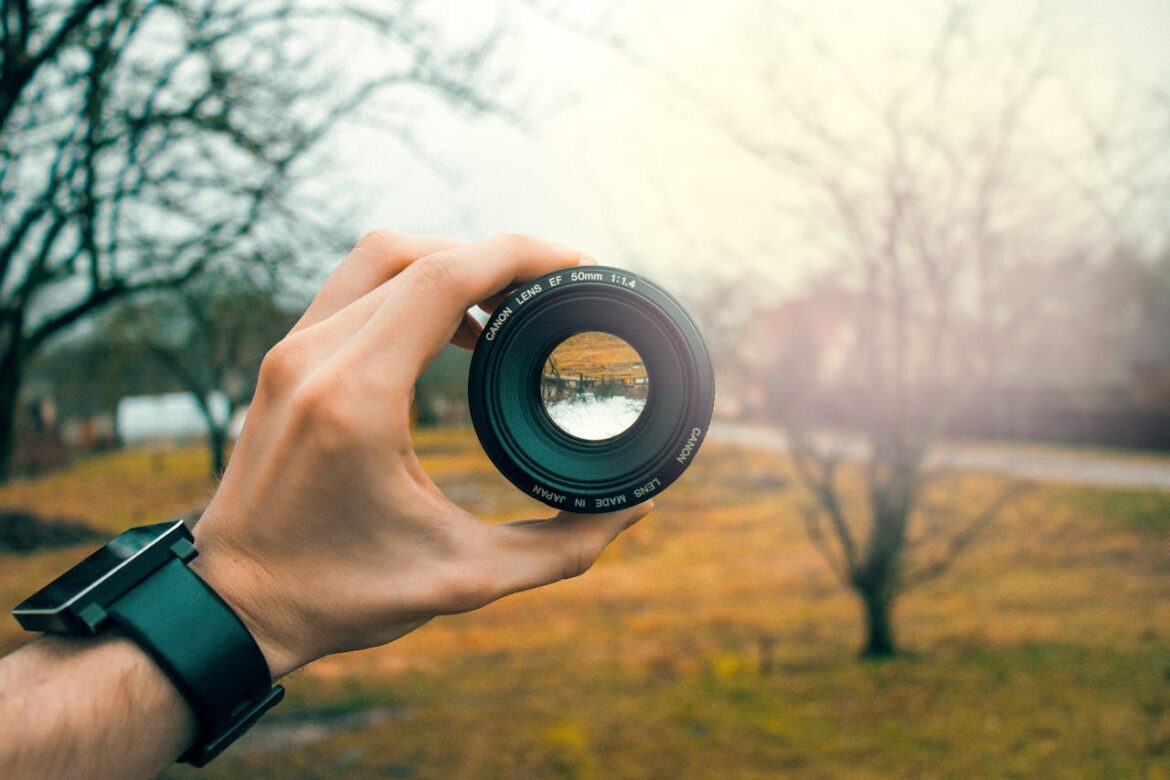Table of Contents
Depth of Field CalculatorWhether you’re shooting portraits, landscapes, or macro photography, knowing exactly what will be in focus can transform your images from amateur snapshots to professional-quality photographs.
📸 Depth of Field Calculator
Key Calculations:
- Circle of confusion based on sensor size
- Hyperfocal distance
- Near and far focus limits
- Front and behind depth of field
- Total depth of field
What is Depth of Field?
Depth of field refers to the range of distance in your photograph that appears acceptably sharp and in focus. It’s the zone of sharpness that extends in front of and behind your main subject. Mastering DOF control allows you to:
- Create beautiful background blur (bokeh) for portraits
- Ensure entire landscapes remain tack-sharp
- Isolate subjects from distracting backgrounds
- Achieve maximum sharpness for product photography
Interactive Depth of Field Calculator
Use our free depth of field calculator below to determine the exact focus range for your camera settings. Simply input your focal length, aperture, subject distance, and sensor type to get precise measurements.
How to Use the DOF Calculator
Step 1: Enter Your Camera Settings
- Focal Length: Input the lens focal length in millimeters (e.g., 50mm, 85mm, 200mm)
- Aperture: Select your f-stop value from the dropdown menu
- Subject Distance: Enter how far your subject is from the camera in meters
- Sensor Type: Choose your camera’s sensor size for accurate calculations
Step 2: Interpret the Results
The calculator provides six key measurements:
- Total Depth of Field: The complete range that will appear sharp
- Near Focus Limit: The closest point that will be in focus
- Far Focus Limit: The farthest point that will be in focus
- Front DOF: How much of the focus zone is in front of your subject
- Behind DOF: How much of the focus zone is behind your subject
- Hyperfocal Distance: The optimal focusing distance for maximum sharpness
Understanding Hyperfocal Distance
The hyperfocal distance is a critical concept for landscape and architectural photographers. When you focus at the hyperfocal distance, everything from half that distance to infinity will appear acceptably sharp. This technique maximizes your depth of field and ensures optimal image sharpness throughout the frame.
How to Use Hyperfocal Distance:
- Calculate the hyperfocal distance using our calculator
- Set your camera’s focus to that exact distance
- Everything from half the hyperfocal distance to infinity will be sharp
- Perfect for landscape photography where you want foreground and background both in focus
Factors Affecting Depth of Field
1. Aperture (F-Stop)
- Wide apertures (f/1.4, f/2.8) create shallow DOF with blurred backgrounds
- Narrow apertures (f/8, f/11, f/16) create deep DOF with more in focus
- The relationship is inverse: smaller f-numbers = shallower DOF
2. Focal Length
- Wide-angle lenses (14mm-35mm) naturally have deeper DOF
- Telephoto lenses (85mm-600mm) create shallower DOF at the same settings
- Longer focal lengths compress the focus zone
3. Subject Distance
- Closer subjects result in shallower depth of field
- Distant subjects increase the depth of field
- Macro photography has extremely shallow DOF due to close focusing distances
4. Sensor Size
- Full-frame sensors produce shallower DOF compared to crop sensors
- Crop sensors (APS-C, Micro Four Thirds) have deeper DOF at equivalent settings
- Circle of confusion varies with sensor size, affecting DOF calculations
Practical DOF Applications by Photography Genre
Portrait Photography
- Use apertures between f/1.4-f/4 for shallow DOF
- Focus on the subject’s eyes for maximum impact
- Background blur (bokeh) isolates your subject beautifully
- Consider distance to background for better separation
Landscape Photography
- Employ f/8-f/16 for maximum sharpness across the frame
- Use hyperfocal distance focusing for optimal results
- Consider foreground elements when calculating focus distance
- Avoid diffraction at very small apertures (f/22+)
Macro Photography
- Extremely shallow DOF requires precise focusing
- Use focus stacking for increased depth of field
- Consider the subject’s depth when choosing aperture
- Manual focus is often more accurate than autofocus
Street Photography
- Zone focusing techniques maximize shooting efficiency
- Moderate apertures (f/5.6-f/8) balance DOF and shutter speed
- Hyperfocal distance focusing keeps everything sharp
- Pre-calculate common distances for quick shooting
Advanced DOF Techniques
Focus Stacking
When even the smallest aperture doesn’t provide enough depth of field, focus stacking combines multiple images focused at different distances. This technique is popular in:
- Macro photography
- Product photography
- Architectural photography
- Landscape photography with close foregrounds
Zone Focusing
This traditional technique involves setting your lens to a specific aperture and distance where your desired zone of sharpness is achieved. Street photographers often use this method for quick, decisive shooting without needing to focus for each shot.
Common DOF Mistakes to Avoid
- Ignoring the hyperfocal distance in landscape photography
- Using apertures that are too wide for group portraits
- Forgetting about sensor crop factors when calculating DOF
- Not considering the background distance in portraits
- Overlooking diffraction at very small apertures
DOF Calculator Tips and Best Practices
- Save common calculations for your favorite lens and camera combinations
- Test your calculations in the field to verify accuracy
- Consider environmental factors like heat haze that can affect apparent sharpness
- Use live view and magnification to fine-tune critical focus
- Bracket your focus for important shots when DOF is critical
Conclusion
Mastering depth of field is essential for photographers who want creative control over their images. Our interactive DOF calculator takes the guesswork out of focus calculations, helping you achieve the exact look you want every time. Whether you’re creating dreamy portraits with creamy bokeh or pin-sharp landscapes that capture every detail, understanding and calculating depth of field will elevate your photography to the next level.
Bookmark this page and use our calculator before your next shoot to plan your focus strategy. With precise DOF calculations, you’ll spend more time capturing great images and less time wondering if your shots are sharp enough.


